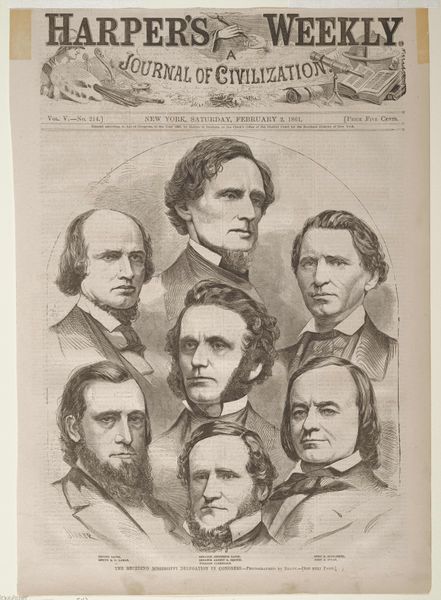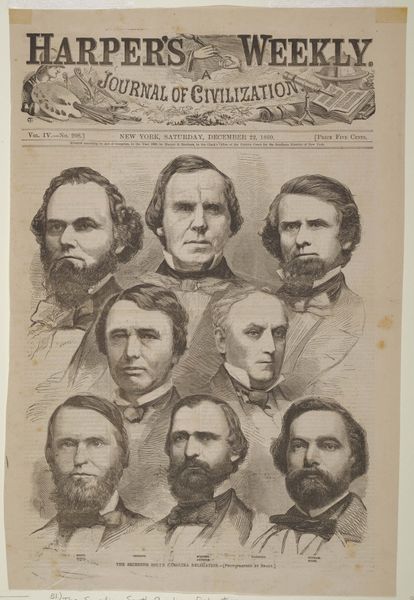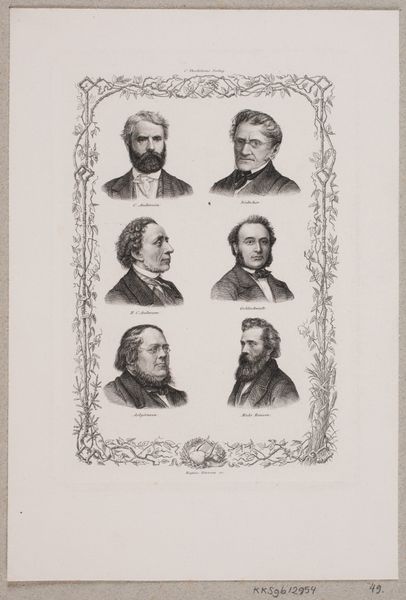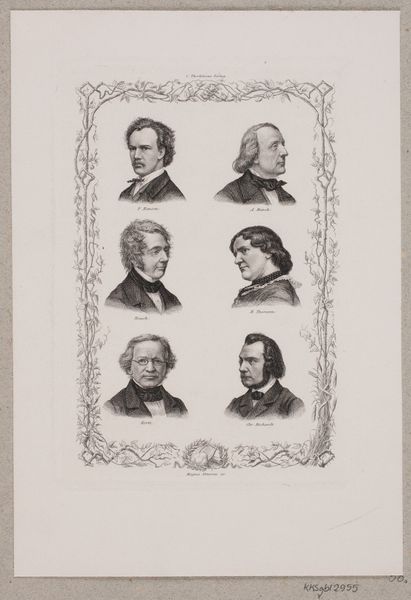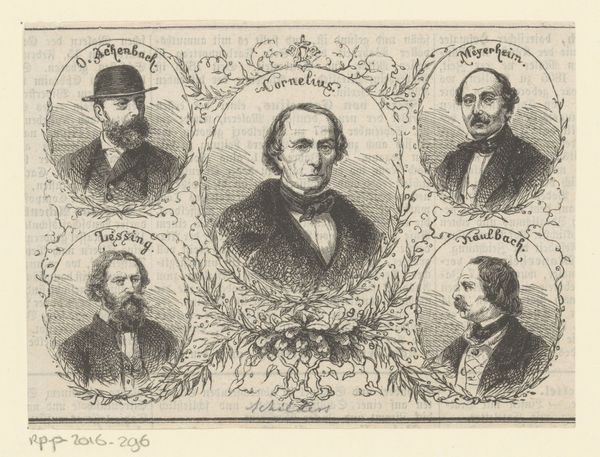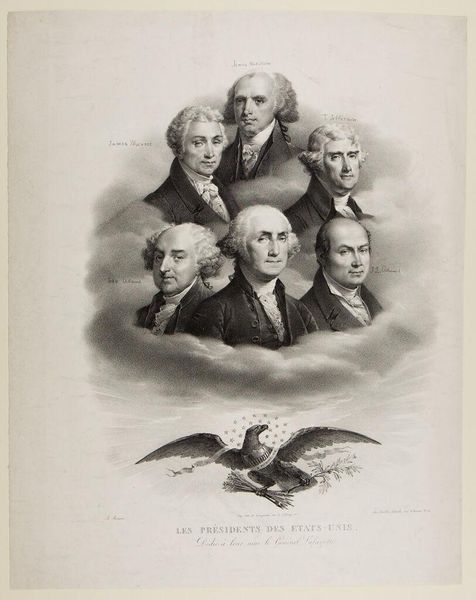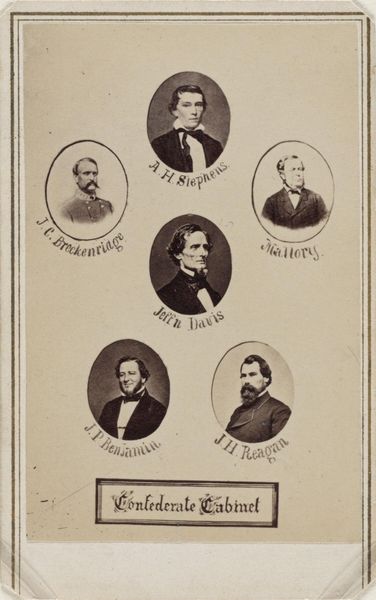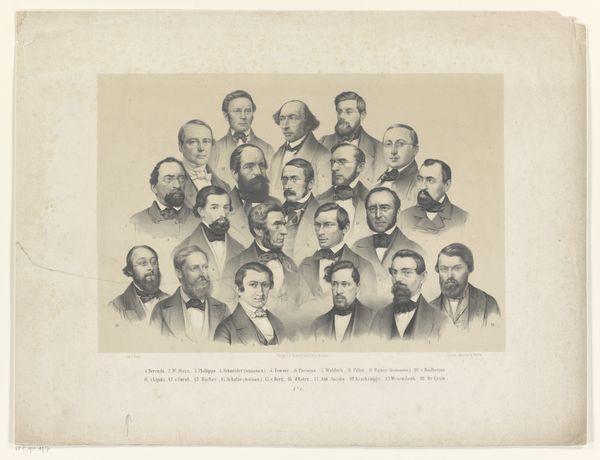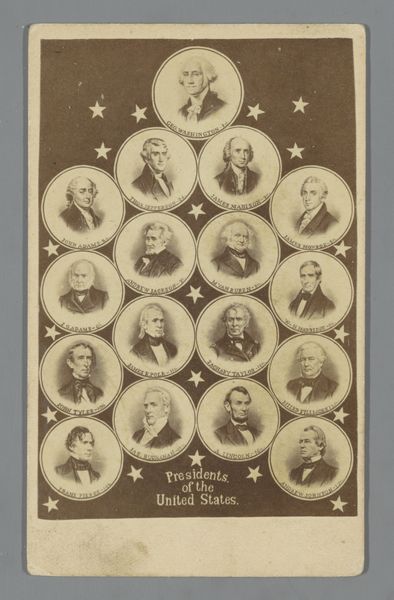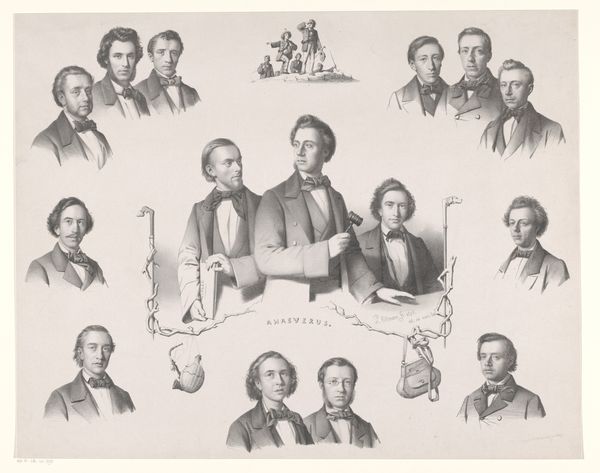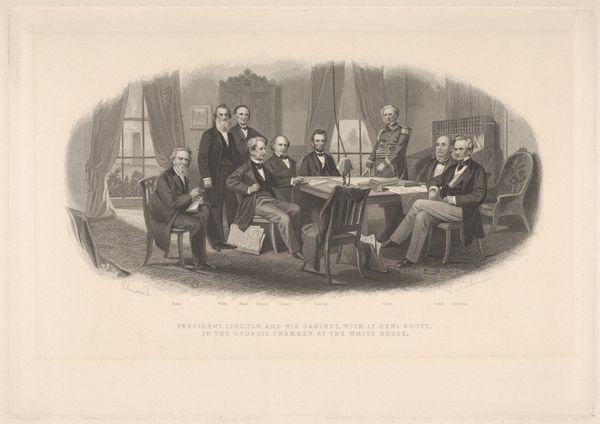
The Seceding Mississippi Delegation in Congress Possibly 1861
0:00
0:00
drawing, print, paper, engraving
#
portrait
#
drawing
# print
#
paper
#
personal sketchbook
#
group-portraits
#
united-states
#
history-painting
#
academic-art
#
engraving
Dimensions: 278 × 230 mm (image); 389 × 263 mm (sheet)
Copyright: Public Domain
Curator: This engraving, "The Seceding Mississippi Delegation in Congress," possibly from 1861 and attributed to Winslow Homer, catches my eye. What are your initial thoughts? Editor: Stark. The stark contrast achieved through engraving lends the image a sense of gravity. The faces, particularly, possess an imposing presence due to the strong delineation of light and shadow. Curator: Absolutely. Engravings like this one, printed in publications such as Harper's Weekly, served a critical purpose in disseminating information and shaping public opinion during the Civil War. The labor involved—the meticulous carving, the industrial printing process—speak volumes about the investment in this visual narrative. Editor: Yes, but let’s focus on the formal qualities first. Look at the arrangement of the seven men. It’s cleverly constructed; a visual hierarchy is at play. Notice how the individual faces draw you in, while the subtle use of hatching creates depth and volume, giving a sense of character. Curator: The character being carefully constructed, though. Consider the context. These men, photographed for illustration, chose to leave the Union. Homer, or the engraver, is participating in the act of representation, helping to construct their legacy, for good or ill, through this distribution method of newsprint. Editor: True, but isn't that always the role of the artist? To select and shape reality, giving the past its substance. In focusing on these visual details we see a potent depiction of resolution but also conflict captured in expressions and features of each face. The meticulous craftsmanship only reinforces this complex duality. Curator: And that craftsmanship exists within a complex power structure. Who gets represented, how they're represented, and who controls the means of that representation is crucial. This print demonstrates how powerful industrial reproduction could be and its influence on social perception. It really highlights art as a part of social struggle, not as isolated aesthetics. Editor: So while acknowledging those social undercurrents, it’s also right to see and value the power of form. The contrasts between dark and light give volume to faces; expressions reveal characters. Curator: I see the lasting power this image possesses beyond just aesthetic composition, especially within its period context as we know this as part of the cause that erupted into Civil War. Editor: Precisely, we find its aesthetic beauty intrinsically linked to that tumultuous era depicted for consumption.
Comments
No comments
Be the first to comment and join the conversation on the ultimate creative platform.
